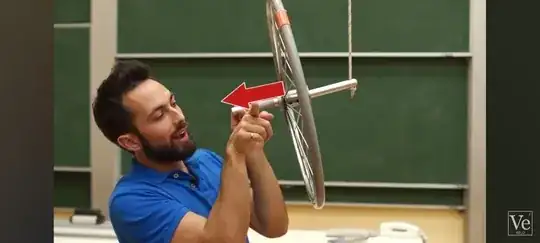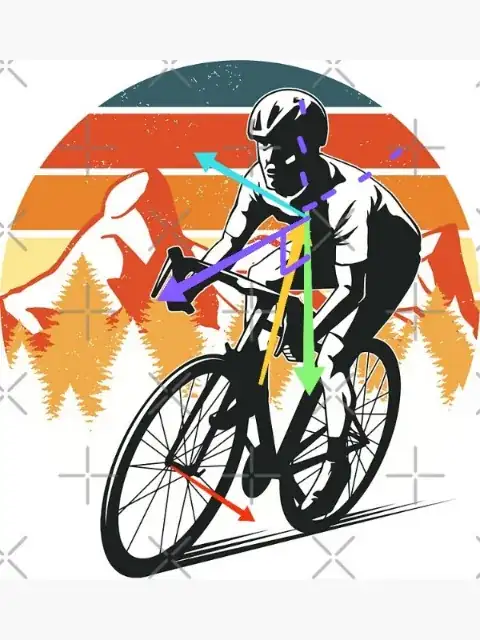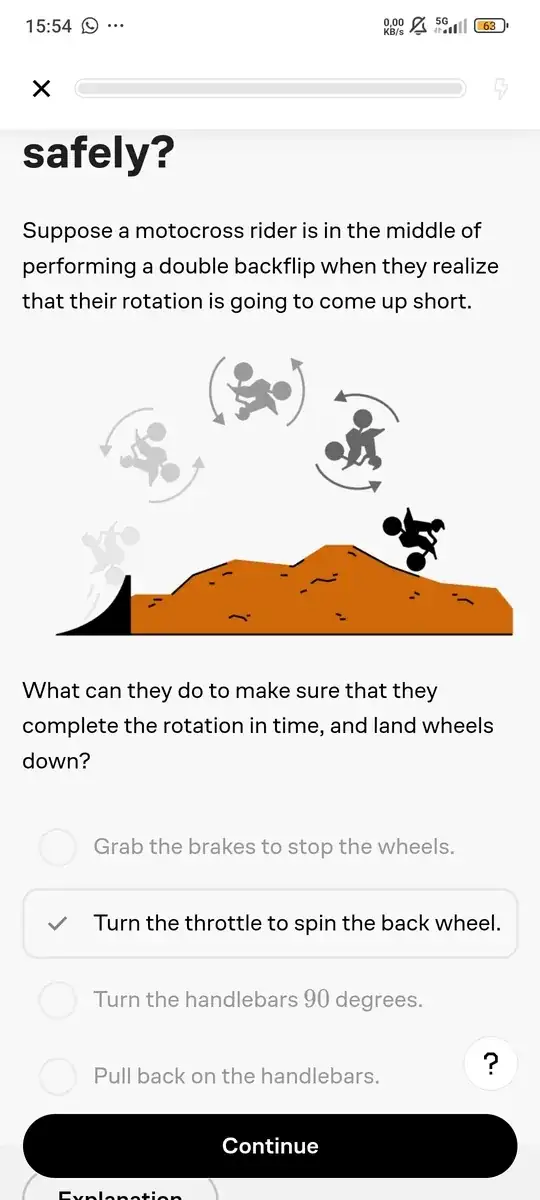I want to be sure I understand fully the conservation of angular momentum or/and the angular momentum itself with 3 examples, the first one I understand but the other 2 not really.
- The famous giroscope precession with the biking wheel (Veritasium video), in the video, the reasoning used is that there is an angular momentum (red arrow) due to the spinning of the wheel and a torque (the finger pointing), and the precession is explained by saying the "Angular momentum follows the torque", which it's okay and I understand.
- Bike and not falling. In this case, I was told by Brilliant app that the conservation of angular momentum is one of the causes that makes the biker to be harder to fall laterally, but then I try to draw the angular momentum due to the wheels' spinning (red arrow), and the external torque forced by a external force (gravity, green arrow) so it creates a torque (purple arrow) that points forward? Instead of pointing with the blue arrow so that it stabilised it?
- Motocross bike jumping from one ramp to another ramp. In this different case, there is an angular momentum existing pointing outside of the image/phone, and then with the throttle, it would create an angular momentum that points inside of the image/phone, but how does conservation of angular momentum here also help to understand that it would allow for the rotation to be quicker?


